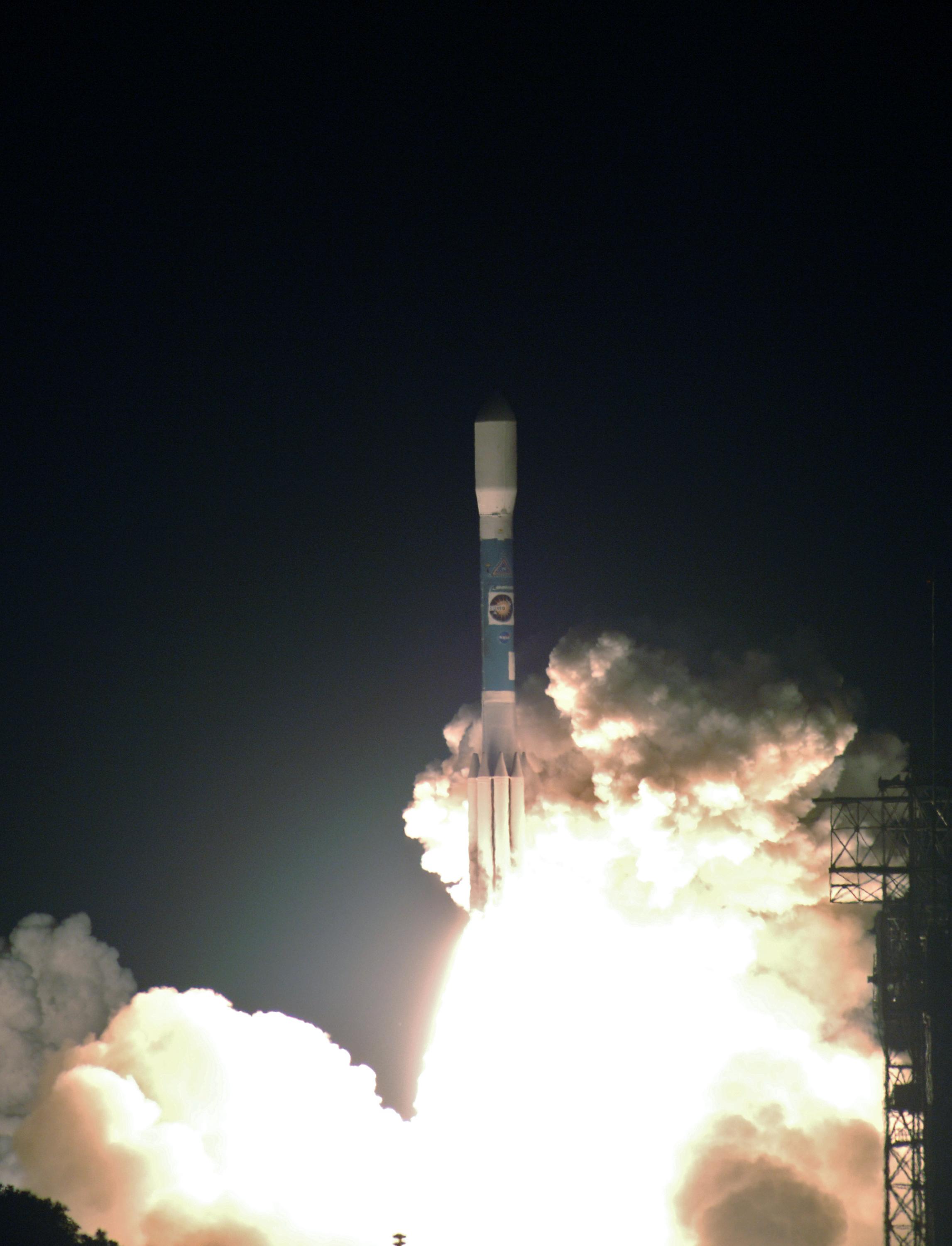Press Release
Twin APL-Built, Solar-Studying Spacecraft Successfully Launched
Wed, 10/25/2006 - 08:57
NASA's STEREO (Solar TErrestrial RElations Observatory) spacecraft — en route as the first mission to capture the sun in 3-D — successfully launched tonight aboard a single Delta II vehicle from Cape Canaveral Air Force Station, Fla., at 8:52 p.m. EDT.
The two nearly identical spacecraft, designed, built and operated for NASA by The Johns Hopkins University Applied Physics Laboratory (APL), in Laurel, Md., separated from the launch vehicle 25 minutes after lift-off. After receiving the first signal from the spacecraft 63 minutes after launch, mission control personnel at APL confirmed each observatory's solar arrays successfully deployed and were providing power to the spacecraft. The initial radio signals were forwarded to the APL-based STEREO Mission Operations Center from NASA's Deep Space Network antennas in Canberra, Australia.
During its two-year mission, the twin observatories will explore the origin, evolution and interplanetary consequences of coronal mass ejections. These powerful solar eruptions are a major source of the magnetic disruptions on Earth and a key component of space weather, which can greatly affect satellite operations, communications, power systems, and the lives of astronauts in space.
Placing STEREO into Orbit
For the next few weeks, the spacecraft will fly in an elliptical orbit that extends from Earth just beyond the moon. During this time, mission operations personnel at APL will place the spacecraft in flight mode, turn on and check out all instruments and subsystems, and ensure all systems are operating nominally in preparation to begin their data collection efforts.
In approximately two months, mission operations personnel at APL will synchronize spacecraft orbits and direct one observatory to its position ahead of Earth. In approximately three months, the second observatory will be redirected to its position trailing Earth. Just as the slight offset between your eyes provides you with depth perception, this placement will allow the STEREO observatories to obtain 3-D images and particle measurements of the sun.
Lunar swingbys will be used to place the observatories into their respective orbits, using the moon's gravity to redirect them to their appropriate orbits — something the launch vehicle alone can't do. This is the first time lunar swingbys have been used to manipulate orbits of more than one spacecraft.
Each STEREO observatory is carrying two instruments and two instrument suites, providing more than a dozen instruments per observatory. APL designed and built the spacecraft platform housing the instruments. When combined with data from observatories on the ground or in space, STEREO's data will allow scientists to track the buildup and liftoff of magnetic energy from the sun and the trajectory of Earth-bound coronal mass ejections in 3-D.
STEREO's instruments were built by numerous organizations worldwide with a principal investigator, or PI, leading each instrument team. The instruments and PIs are as follows: Sun-Earth Connection Coronal and Heliospheric Investigation (SECCHI) — Russell Howard, Naval Research Laboratory; In situ Measurements of PArticles and CME Transients (IMPACT) — Janet Luhmann, University of California, Berkeley; PLAsma and SupraThermal Ion Composition (PLASTIC) — Antoinette Galvin, University of New Hampshire; and STEREO/WAVES (S/WAVES) — Jean-Louis Bougeret, Paris Observatory, Meudon.
STEREO is the third mission in NASA's Solar Terrestrial Probes Program. STEREO is sponsored by NASA's Science Mission Directorate, Washington, D.C. NASA Goddard's Solar Terrestrial Probes Program Office, in Greenbelt, Md., manages the mission, instruments and science center. APL designed and built the STEREO spacecraft and will operate the twin observatories for NASA during the mission.
For more information about STEREO or to download images, visit stereo.jhuapl.edu.
Replays of today's launch and other STEREO-related video will be available on NASA TV on the Web (see http://www.nasa.gov/ntv) and at 12 pm ET with replays at 5 and 10 pm and 6 am. In the continental United States, NASA Television's Public, Education and Media channels are carried by MPEG-2 digital C-band signal on AMC-6, at 72 degrees west longitude, Transponder 17C, 4040 MHz, vertical polarization. They're available in Alaska and Hawaii on an MPEG-2 digital C-band signal accessed via satellite AMC-7, transponder 18C, 137 degrees west longitude, 4060 MHz, vertical polarization. A Digital Video Broadcast compliant Integrated Receiver Decoder is required for reception. Analog NASA TV is no longer available.
